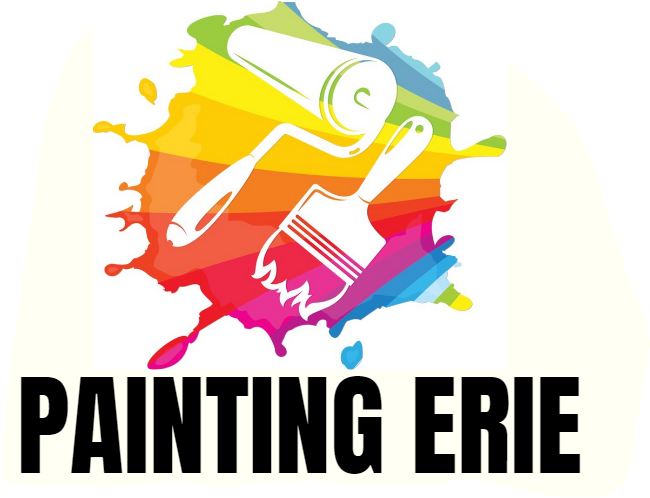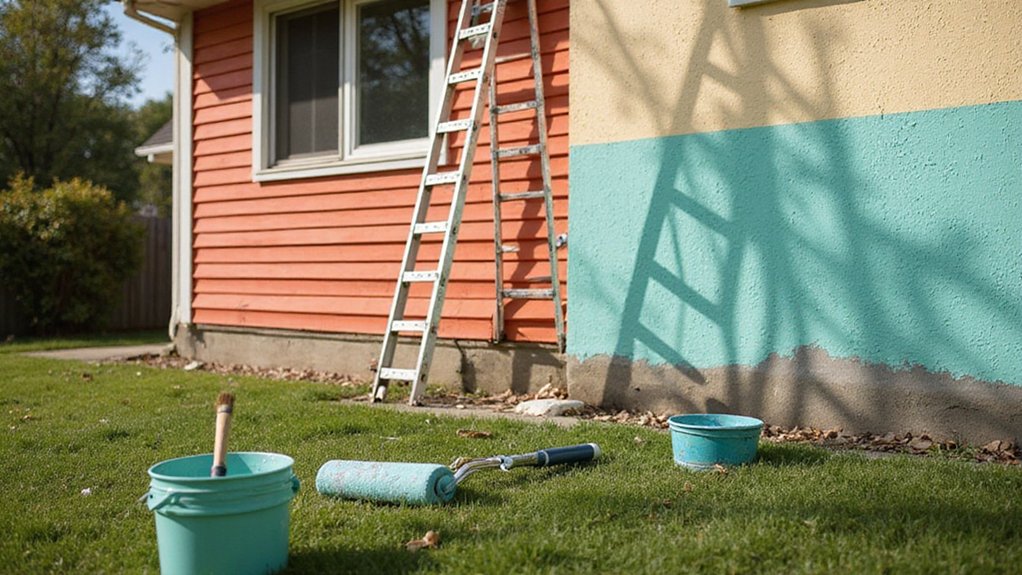As you weigh the pros and cons of taking on a DIY exterior painting project, consider the potential cost savings that come with avoiding labor expenses. However, this benefit is contingent upon your willingness to invest significant time and physical effort. With proper surface preparation and high-quality materials, you can achieve professional-looking results, but the risks of safety concerns, surface damage, and uneven finishes are real. Can you traverse these challenges and emerge with a satisfactory outcome, or is it better to leave it to the pros?
The Cost-Benefit Analysis of DIY Exterior Painting
When considering a DIY exterior painting project, the cost-benefit analysis is a pivotal step that can determine the success or failure of your decision to take on the task. You’ll need to assess the potential savings against the potential drawbacks.
One key benefit is the cost savings – you won’t have to pay for labor. However, you’ll need to factor in the cost of materials, equipment, and any necessary permits. Additionally, you’ll need to reflect on the time and effort required to tackle accessibility challenges, such as reaching high areas or traversing tricky terrain.
You’ll also need to think about managing weather conditions, like rain or extreme heat, which can impact the quality of your work. By carefully weighing these factors, you can make an informed decision about whether a DIY exterior painting project is right for you. Furthermore, unlike professional services that account for environmental factors, a DIY approach may overlook critical elements like sun’s impact on color when planning the project.
Time and Labor Commitment Required
You’ve assessed the cost-benefit analysis of DIY exterior painting and now it’s time to contemplate the time and labor commitment required.
Painting the exterior of your home is a time-consuming process that demands a significant amount of physical effort. You’ll need to dedicate several days or even weeks to complete the project, depending on the size of your home and the number of coats you apply. Additionally, you’ll need to factor in time for preparation, such as power washing, scraping, and sanding.
The physical demands of exterior painting shouldn’t be underestimated, as it involves climbing ladders, working in various weather conditions, and lifting heavy equipment. You’ll need to ponder whether you have the physical stamina and endurance to complete the project successfully. Moreover, a thorough preparation can help uncover hidden property issues like moisture problems or mold that need addressing before painting begins.
Achieving Professional-Looking Results
To achieve professional-looking results, careful planning and attention to detail are indispensable. You’ll need to guarantee proper surface preparation, which includes cleaning, scraping, and sanding to create a smooth canvas for painting. This step is critical, as it will affect the final appearance of your exterior paint job.
Next, choose a high-quality paint that’s suitable for your exterior surfaces, and select the right tools, such as rollers and brushes, for the task. Consistent application techniques are also paramount. Work from top to bottom, using long, even strokes to maintain uniformity. Ensure to apply thin, even coats, allowing each layer to dry before applying the next.
Potential Risks and Mistakes to Avoid
Begin your DIY exterior painting project, remember that potential risks and mistakes can quickly turn your dream into a nightmare. You’re not just risking a subpar finish, but also your safety and the integrity of your home’s surfaces.
Safety concerns are paramount, as heights, ladders, and power washers can be hazardous if not handled properly. Damaged surfaces are another common mistake, resulting from inadequate preparation, incorrect paint application, or using low-quality materials. You may end up with uneven finishes, peeling paint, or even structural damage.
Additionally, failure to properly clean and prepare the surface can lead to paint adhesion issues, further complicating the process. By being aware of these potential risks and mistakes, you can take necessary precautions to guarantee a successful DIY exterior painting project.
Preparation and Planning: Key to Success
As the foundation of a successful DIY exterior painting project, preparation and planning are critical steps that can’t be overlooked. You’ll need to thoroughly assess your exterior surface, identifying areas that require repair or replacement.
Surface cleaning is essential, as dirt, grime, and mildew can affect paint adhesion. Remove any debris, power wash the surface, and let it dry completely before proceeding. Additionally, consider the weather conditions: avoid painting in direct sunlight, high winds, or during precipitation. Plan your project around favorable weather conditions, usually during the spring or fall.
A well-planned and prepared surface guarantees a smooth, professional-looking finish. By investing time in preparation and planning, you’ll set yourself up for success and avoid costly mistakes down the line.
The Importance of Equipment and Materials
You’ve got your surface prepared and planned, now it’s time to turn your attention to the tools and products that will bring your vision to life. Investing in high-quality equipment and materials is indispensable for a successful DIY exterior painting project.
You’ll need a variety of tools, such as rollers, brushes, and ladders, to guarantee a smooth and efficient process. Don’t forget to contemplate proper storage requirements to keep your equipment organized and within reach. Safety precautions are also vital, so make sure you have gloves, masks, and protective eyewear to prevent accidents.
Additionally, choose paints and coatings that are specifically designed for exterior use and suitable for your climate. By selecting the right materials and equipment, you’ll be well on your way to achieving a professional-looking finish that will amplify your home’s curb appeal.
Considering Your Skill Level and Experience
How confident are you in your ability to tackle an exterior painting project on your own? Your skill level and experience play a significant role in determining the success of your DIY exterior painting project. Before you start, consider the following:
- Have you honed techniques such as preparing surfaces, applying primer, and using the right painting tools?
- Do you understand the importance of understanding limitations, such as knowing when to seek professional aid for complex tasks or high-risk areas like ladders or scaffolding?
- Have you worked on similar projects in the past, or is this your first time addressing an exterior painting job?
- Are you comfortable with the physical demands of painting, including standing, lifting, and bending for extended periods?
- Can you dedicate the necessary time and effort to complete the project, including planning, preparation, and execution?
Frequently Asked Questions
Can I Paint My Exterior Walls in the Rain or High Winds?
You shouldn’t paint your exterior walls in wet weather conditions, like rain, as it can lead to uneven drying and poor adhesion. Additionally, gusty wind challenges can cause paint to splatter, making a mess and compromising the finish.
Will DIY Exterior Painting Increase My Home’s Resale Value?
When you tackle DIY exterior painting, you’ll increase your home’s resale appeal by improving its curb appeal, making it more attractive to potential buyers and setting it apart from neighboring properties.
Can I Use Interior Paint on My Home’s Exterior Surfaces?
You shouldn’t use interior paint on exterior surfaces, as it won’t provide adequate paint coverage and may not withstand weathering. Verify proper surface preparation and choose exterior-specific paint to guarantee a durable, long-lasting finish that meets your home’s unique needs.
How Long Does Exterior Paint Typically Last Before Needing a Retouch?
You’ll find that exterior paint typically lasts 7-10 years before needing a retouch, depending on weather conditions and the quality of paint preparation, such as surface cleaning and primer application, which greatly impact the paint’s durability.
Can I Paint Over Existing Exterior Paint Without Scraping It Off?
You can paint over existing exterior paint without scraping it off, but be prepared for prep work requirements like cleaning and sanding, and consider paint compatibility concerns to guarantee a smooth, long-lasting finish.

